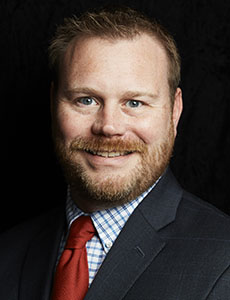 Risk Central
Risk Central
White papers, service directory and conferences for the R&I community.

The advertising landscape has fundamentally shifted as brands redirect their marketing dollars from traditional media to where consumers spend their time: social media platforms. This transformation has created a new economy of social media influencers, ranging from those earning modest side income to multi-millionaire content creators who command global audiences.
However, this rapidly growing sector presents unique challenges that traditional insurance products weren’t designed to address. As influencer partnerships become more sophisticated and widespread, both creators and the brands that hire them face potential liability exposures that can result in significant financial consequences.

Chris Cooper, SVP, U.S. Head of Media & Professions, QBE North America
The financial potential in influencer marketing spans an enormous range. “There’s a huge range in influencer revenue. At the top end, you have celebrity influencers earning millions of dollars. At the other end, it’s people with just a thousand followers who might earn very little money,” said Chris Cooper, SVP, U.S. Head of Media & Professions at QBE North America.
“In the middle, are influencers who typically represent the greatest risk and opportunity. These are influencers who earn tens of thousands of dollars per year. This demographic represents creators who have moved beyond hobbyist status but haven’t yet reached the level where they employ business managers or have sophisticated risk management strategies.”
The shift in advertising spending reflects broader consumer behavior changes. “Advertising dollars have shifted from traditional print media, digital banners, and TV commercials to platforms where people’s eyes are—primarily social media,” Cooper said. “A lot of this advertising comes in the form of sponsored reviews or influencers talking about their experiences with products and how the items have helped in their daily lives.”
The authentic, personal nature of influencer content that makes it effective also creates unique liability exposures. Unlike traditional advertising, which goes through multiple layers of legal review, influencer content is often created quickly by individuals who may not understand the legal implications of their posts.
Cooper explained how QBE became aware of this growing problem: “We’re a traditional media liability insurer that has been in this space since 2013 in North America and longer elsewhere in the world. We insure companies that are in the business of creating and disseminating content against exposures like copyright infringement, defamation, invasion of privacy, false light, and right of publicity.”
QBE’s existing relationships with specialized law firms revealed a growing trend. “We work with many law firms specializing in advertising law, copyright law, and defamation that started informing us they were defending non-media companies for claims arising from content created by small or midsize influencers who had made mistakes,” Cooper said.
The financial burden of these mistakes often falls on the brands rather than the influencers themselves. “Because these influencers typically didn’t have insurance or sufficient assets, the larger brands that hired them ended up bearing the entire burden from a claims payment, claims handling, and defense counsel perspective,” he said.
One particularly common issue involves music licensing. “We’ve seen numerous slip-ups by influencers and brands where they’ve allowed music to play in the background of content,” Cooper said. “Even something as simple as having music playing in the background while recording promotional content for a brand would constitute potential copyright infringement without a proper synchronization license.”
The distinction between personal and commercial use creates additional complexity. “Most platforms have blanket synchronization licensing agreements with music publishers, but these are strictly for personal use,” Cooper explained. “However, once content shifts to advertising and commercial purposes, the available music library narrows significantly. There’s a fine line between when an influencer is posting personally versus commercially, and many aren’t aware of this distinction.”
The timing of legal intervention also affects outcomes. “The law firms told us they were getting cases very late in the process, hurting both the brand and influencer’s chances of successfully defending their cases,” Cooper said.
Drawing on its decade-plus experience in traditional media liability coverage, QBE developed a targeted solution, The Influencer by QBE, that addresses the specific challenges brands face when working with influencers. The approach combines education, insurance coverage, and streamlined claims management.
“Rather than simply writing policies for every influencer, we created a product addressing the core problem our larger insureds were facing,” Cooper said. “This product recognizes that even companies with existing media liability policies face challenges with influencer-related claims due to high deductibles and coverage gaps.”
Education forms a cornerstone of QBE’s approach. “We really leaned into that educational aspect by creating a short learning module. A 30-minute video covers the major topics influencers need to watch out for, followed by a short quiz,” Cooper said. “The video covers essential areas of media and advertising law that influencers need to understand from copyright and trademark to defamation and right of publicity.”
The insurance coverage itself reflects the unique structure of influencer partnerships. “The policy covers both the brand and the influencer, but solely for the actions of the influencer,” Cooper explained. “This isn’t meant to replace a larger media liability or Errors & Omissions policy for a large company. It’s designed to address that specific influencer-related problem we kept hearing about.”
The coverage structure aligns with how influencer campaigns typically operate and provides dedicated coverage for each campaign. “Influencers are typically hired for specific campaigns with contractual obligations. For example, they might be contracted to create 20 posts about a lavender latte. Then they might get another contract for 10 posts about a pumpkin spice latte,” Cooper said. “We’ve set an occurrence-based $250K limit for each of those contracts.”
The Influencer launched in mid-August 2025 and is distributed through brokers who can manage the process of getting influencers signed up with the training and coverage. “The brand and broker can direct influencers to our dedicated web page where they provide basic information and complete the required training,” Cooper explained.
Looking ahead, the scale of influencer marketing continues to expand. “Some brands and large companies work with thousands of influencers,” Cooper said. “As this market grows, specialized risk management solutions become increasingly critical for protecting both creators and the brands that partner with them.”
To learn more, visit https://www.qbe.com/us/professional-liability.
QBE makes no warranty, representation, or guarantee regarding the information herein or the suitability of these suggestions or information for any particular purpose. QBE hereby disclaims any and all liability concerning the information contained herein and the suggestions herein made. Moreover, it cannot be assumed that every acceptable risk transfer procedure is contained herein or that unusual or abnormal circumstances may not warrant or require further or additional risk transfer policies and/or procedures. The use of any of the information or suggestions described herein does not amend, modify, or supplement any insurance policy. Consult the actual policy or your agent for details about your coverage. QBE and the links logo are registered service marks of QBE Insurance Group Limited. © 2025 QBE Holdings, Inc.
This article was produced by the R&I Brand Studio, a unit of the advertising department of Risk & Insurance, in collaboration with QBE North America. The editorial staff of Risk & Insurance had no role in its preparation.